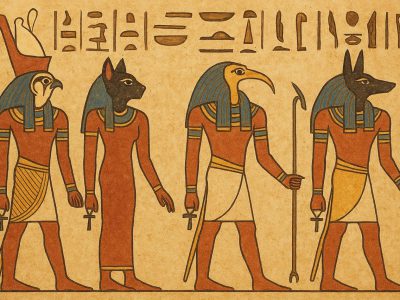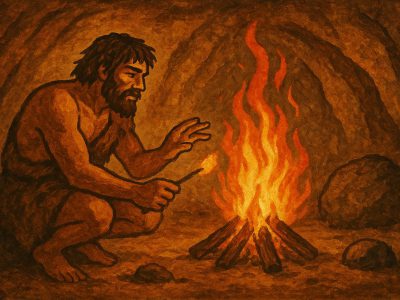It is a training program aimed at equipping participants with the knowledge and skills necessary to date and classify stone tools efficiently and effectively. The program also covers a wide range of fundamental and advanced topics in the field of Paleo-environments and paleo-anthropology during pre-historical periods in general.
By the end of this course, the trainee will be able to:
Acquire skills that enable to contribute to archaeological research, museum curation, or cultural heritage preservation such as:
- Identify Stone Tool Types: Recognize various stone tool categories (e.g., hand axes, scrapers, blades) based on shape, size, and manufacturing techniques.
- Understand Manufacturing Techniques: Describe and differentiate methods like knapping, flaking, and grinding used in stone tool production.
- Classify Tools by Typology: Apply typological frameworks to categorize tools according to established archaeological classifications (e.g., Borders’ typology for Paleolithic tools).
- Determine Chronological Context: Use relative and absolute dating methods (e.g., stratigraphy, radiocarbon dating, thermoluminescence) to estimate the age of stone tools.
- Analyze Tool Function: Infer the potential uses of tools (e.g., cutting, scraping, hunting) based on wear patterns, residue analysis, and experimental archaeology.
- Interpret Cultural Significance: Relate stone tools to the cultural, technological, and behavioral practices of prehistoric populations.
- Document and Record Findings: Accurately measure, draw, photograph, and catalog stone tools for archaeological records.
- Apply Analytical Tools: Use basic microscopy or imaging techniques to examine tool surfaces for use-wear or residues.
- Evaluate Archaeological Contexts: Assess the site context (e.g., settlement, quarry) to understand tool distribution and discard patterns.
- Conduct Basic Research: Formulate research questions, compare findings with published studies, and present results clearly.
Course Features
- Lectures 15
- Quiz 0
- Duration 1680:00:00
- Course Duration 04:51:00
- Skill level All levels
- Language Arabic
- Students 2
- Assessments Yes
Curriculumm
- 11 Sections
- 15 Lessons
- 10 Weeks
- Module 1: Introduction to Stone Ages1
- Module 2: Prehistoric Hominine Species and their Paleo-environments through the Stone Ages1
- Module 3: Hominine's activities and their related types of stone tools1
- Module 4: Materials and techniques of knapping stone tools1
- Module 5: Lower Paleolithic Core Industries1
- Module 6: Middle Paleolithic Flake Industries3
- Module 7: Upper Paleolithic Blade Industries4
- Module 8: Neolithic Age Industries1
- Module 9: Reading, classifying and documenting stone tool1
- Module 10: New methods for studying and illustrating stone tools1
- References- دعاء سيد إبراهيم، العصر الحجرى القديم: العصر الحجرى القديم الأسفل فى وادى النيل وبلاد الشام وشبه الجزيرة العربية، الجزء الأول، دار السعيد، القاهرة، 2020. - دعاء سيد إبراهيم، العصر الحجرى القديم: العصر الحجرى القديم الأوسط فى مصر وبلاد الشام وشبه الجزيرة العربية، الجزء الثانى، دار السعيد، القاهرة، 2022. - دعاء سيد إبراهيم، " الأشولية في مصر"، المجلة السنوية لكلية البنات للآداب والعلوم والتربية. جامعة عين شمس، المجلد ١٩، ٢٠١٨. - دعاء سيد إبراهيم، "الأشولية في الجزيرة العربية"، المجلة السنوية، كلية البنات للآداب والعلوم والتربية، جامعة عين شمس، المجلد ١٩، ٢٠١٨. - دعاء سيد إبراهيم، " الخروج من أفريقيا ١"، وقائع المؤتمر الدولي الثاني لعصور ما قبل التاريخ في العالم العربي، مكتبة الإسكندرية، ٢٠١٥. - دعاء سيد إبراهيم، " الصناعات الحجرية في العصر الحجري القديم الأوسط في مصر والجزيرة العربية"، وقائع المؤتمر الدولي الأول لعصور ما قبل التاريخ في العالم العربي، القاهرة، ٢٠١٢. ـــــــــــــــــــــــــــــــــــــــــــــ - إبراهيم أحمد رزقانة، الآلات الحجرية، صناعاتها وأشكالها، مكتبة الآداب ومطبعتها، القاهرة، 1952. - إبراهيم أحمد رزقانة، موضوعات من الجغرافيا التاريخية، مكتبة الآداب ومطبعتها، القاهرة، 1966. - أحمد يوسف دياب, آسيا الغربية فى العصر الحجرى القديم ( دراسة متخصصة فى الأدوات الحجرية) , رسالة دكتوراه بكلية الآثار جامعة القاهرة , 2005. - حسن الشريف، عصور ما قبل التاريخ، الجزء الأول، العصر الحجرى القديم-مصر- غربى آسيا- شمال إفريقيا، البحيرة، 1994، ص 2-3. - -رينيس بياتريكس ميدان, عصور ما قبل التاريخ فى مصر , ترجمة ماهر جويجاتى, القاهرة,2001,ص33 - 40. - -سلطان محيسن، بلاد الشام فى عصور ماقبل التاريخ (الصيادون الأوائل)، الأبجدية للنشر، دمشق، 1989. - -فاروق شويقة، مقدمة فى الأنثروبولوجيا الطبيعية والسلالات البشرية, دار روتاربرينت, القاهرة , 1986. - سر جون إيفانز ، الأدوات الحجرية القديمة والأسلحة والحلي لبريطانيا العظمى، لونجزمان، لندن، 1897. - رياض، زينب عبد التواب، مصر وصناعة الأدوات الحجرية خلال عصور ما قبل التاريخ، مجلة الآثار، 2016.0
Target audiences
- This course would appeal to those with a mix of academic, professional, or personal interest in archaeology, human history, or material culture, particularly those who value hands-on or technical skills in analyzing artifacts such as:
- Archaeology students: Undergraduate or graduate students studying archaeology or anthropology, seeking to specialize in lithic analysis or prehistoric technologies.
- Professional archaeologists: Researchers or field archaeologists looking to enhance their skills in identifying, classifying, and dating stone tools for excavation or research purposes.
- Historians and anthropologists: Scholars interested in human evolution, early technologies, or cultural development who need a technical understanding of stone tool analysis.
- Museum curators and cultural heritage professionals: Individuals involved in curating or preserving archaeological artifacts, requiring knowledge of stone tool classification for cataloging or exhibition.
- Avocational archaeologists and enthusiasts: Hobbyists or members of archaeological societies with a keen interest in prehistory and material culture.
- Geologists or material scientists: Professionals studying the geological sources of stone tools or their material properties, focusing on dating techniques like radiocarbon.
- Educators: Teachers or professors in history, anthropology, or related fields who want to incorporate stone tool studies into their curricula.





